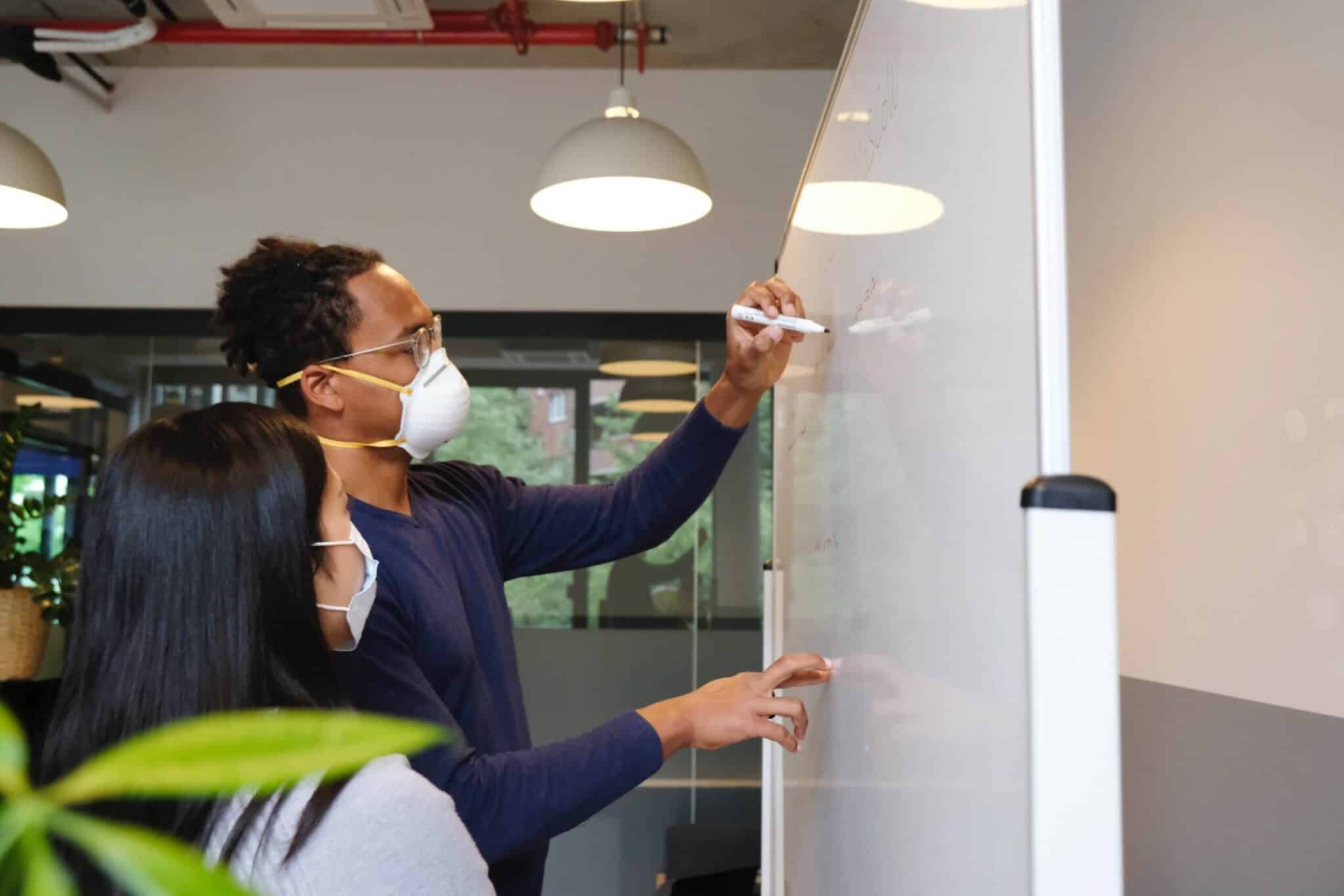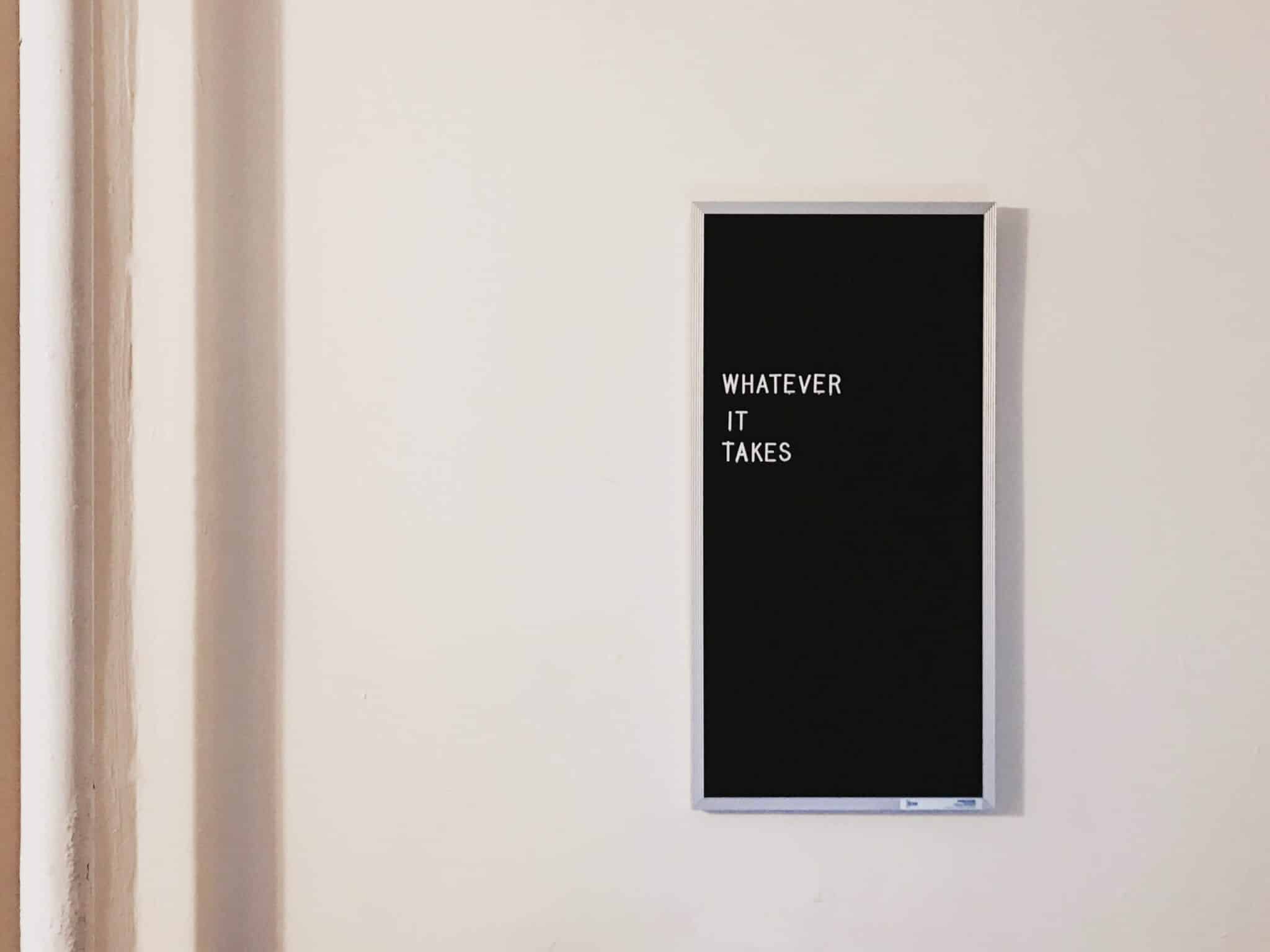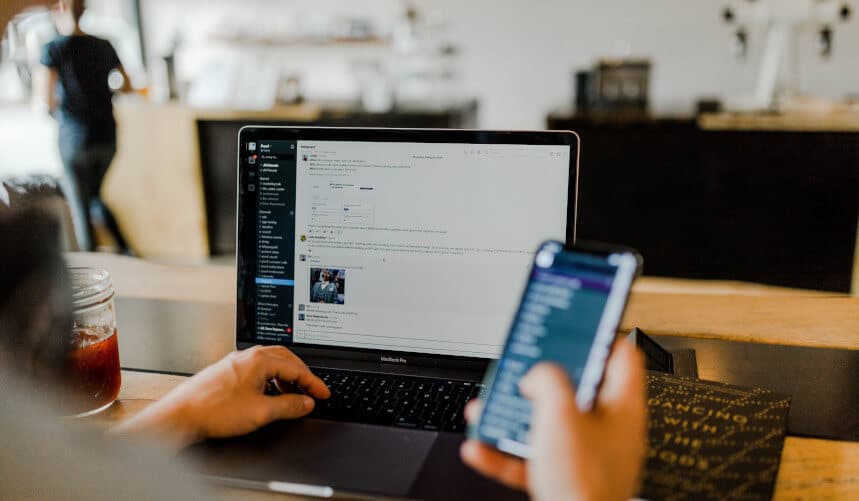The COVID-19 pandemic has resulted in a new, hybrid workforce that facility managers (FMs) have to navigate—especially as things continue to change.
Facility managers face a unique challenge: plan for this new modern work environment while keeping employees safe and sound. In this article, we’re exploring how FMs can do just that while keeping employees happy and productive with a mix of technology and communication.
What is a hybrid workforce?
A hybrid workforce is a blended type of workforce consisting of both remote working and in-office working. This could mean some employees work in the office while others are working from home, and switch per a shift-work schedule. Or it could mean some employees are strictly working from home or in the office indefinitely.
From the start of the pandemic, FMs have faced many challenges—from helping employees work remotely to preserving company productivity, connectivity, and happiness, all while adjusting to this new way of working themselves.
Some companies have chosen to take a more permanent approach to remote working, like Twitter and Facebook. In contrast, some have chosen to allow employees back into the office with enhanced COVID-19 protocols. Then there are the companies that have chosen to group employees into shifts. Known as shift work, this type of workstyle combines working remotely and working in-person in the office.
What your company chooses to do will largely depend on the nature of your industry, your company size, and other factors. With that, let’s take a look at how FMs can plan for a hybrid workforce in a way that keeps employees happy and productive despite pandemic circumstances.

Understanding who’s in the office
It’s important to know who’s in the office at any given time to make the hybrid workforce model work best.
Having a pulse on the office’s occupancy level helps FMs with several things, including:
- Planning shift work schedules
- Understanding the building’s new minimum viable capacity
- Making sure employees are spaces appropriately apart
- Providing full visibility to both management and staff as to where everyone is located
- Optimizing floor space for maximum efficiency
Let’s take a closer look at a few ways FMs can streamline this essential component of a hybrid workforce.
Desk booking software
Desk booking software is a versatile tool that can be used in many ways to help FMs plan for a hybrid workforce.
If your company is adopting a shift work schedule or will be completely in-office, desk booking software lets employees book their desk in advance. This way, employees have peace of mind knowing they have a designated desk, whether permanently or during their office shift.
Desk booking software can also help your cleaning staff understand where to allocate extra cleaning time, which we’ll touch on later. With this valuable tool, FMs can better understand how booked up the office is at any given time to make sure there aren’t too many people inside at once and that the right people from each shift are present.
Sensors
Sensors are an FMs best friend, especially in the age of COVID-19. The data gathered by sensors is a valuable tool for any facility manager, and in these ever-changing times, this data is a valuable asset to any strategizing.
Sensors help with a variety of day-to-day responsibilities and tasks, such as:
- Collecting occupational data to help the company adhere to health codes
- Generating cleaning reports
- Serving as a physical distancing monitoring system
- Providing no-touch solutions for objects like doors, lights, paper towel dispensers, and other high-touch items and spaces
- Offering HVAC and BAS control
Sensors enable remote desk booking for employees, which adds another layer of security and peace of mind. Sensor technology helps both employees and FMs stay informed of the current state of the office in real time. That way, there’s never a question or doubt about occupancy or health hazards.
Visual Directory
A tool like Visual Directory helps both FMs and employees navigate the building, whether physically in the office or working from home. This essential workplace software makes it easy for employees and FMs to see which desks and rooms are booked, and where specific employees are sitting.
A visual directory tool is incredibly helpful if you’ve reconfigured your office since returning; employees can see where specific equipment is like printers, cleaning supplies, and other items are located throughout the office.
Best of all, a tool like Visual Directory updates in real-time, so you always have an accurate look at your office’s occupancy. Plus, if you use a visual directory tool that integrates with software you’re already using, like Slack and Microsoft Teams, you can maximize productivity.

Enhancing cleaning and sanitizing protocols
There’s no question that boosting your company’s cleaning protocol is essential for maintaining a safe and healthy workplace. Especially if you’re adopting a shift work or all in-office workforce model, ramping up sanitizing procedures and keeping track of what areas are cleaned and how often is critical to a safe transition back to the physical workspace.
A few ways to elevate your cleaning practices include:
- Creating and stick to a rigorous cleaning schedule
- Logging which areas were cleaned and when
- Making the log and the protocol available for employees to see
- Keeping cleaning staff informed on which areas to clean if you’re adopting shift work (note: some areas may not need to be cleaned as frequently if no employees are using those spaces)
Aside from literally keeping employees safe from COVID-19, enhanced cleaning procedures can bring peace of mind, which is vital to help with productivity levels and overall well-being.

Improving company-wide communications
Whether employees will be spending time in the office or completely working from home, it’s important to streamline communications. If the scramble to work virtually taught the global workforce anything, it’s that keeping the lines of communication open and accessible is vital to success.
Here are a few ways FMs can support better communication with a hybrid workforce.
Host virtual meetings
Companies have been using tools like Zoom and Google Meet to hold meetings for quite some time now. Still, for communicating important company information, a virtual meeting may be best for significant company updates.
Whether it’s every week or biweekly, a company-wide virtual meeting is a great way to bring the company together and create an opportunity for employees to share their thoughts, concerns, and questions. Just as some information should be shared in-person rather than over email or via memo, virtual meetings are the next best thing to an in-person meeting.
Some other ideas for virtual meetings include:
- 1:1 meetings with managers and employees
- Round table or Q&A discussions to provide transparency and let employees voice their opinions
- Weekly or bi-weekly company update meetings
Create a company wiki or intranet
Establishing a dedicated wiki or intranet for company documents, updates, and more that all employees can access, no matter if they’re working from home or in the office, is a great way to keep communication clear.
A dedicated space like this helps organize important information, so nothing gets lost in the mix. This is especially helpful if your company uses various communication channels like Slack, email, Zoom, or other tools.
Provide clear, concise signage around the office
Whether employees will only be in the office half the time or full time, clear signage is vital to keeping everyone safe and healthy.
Facility managers could include signage for things such as:
- Cleaning logs and schedules
- Hygiene practices/protocol
- Directions on how to navigate the workplace
The important thing is to keep this messaging clear and in areas where employees will see them regularly. You want your signage to provide direction, mitigate any confusion, and make it clear to employees what you’re asking them to do while in the office.

Preserve the employee experience
A principal part of maintaining employee health is making sure their mental health is in a good place, too.
COVID-19 has created a lot of stress for many people and their families, and job security is a major stressor for tons of people globally. Maintaining a healthy and happy workplace starts with the employee experience.
Let’s take a look at a few ways FMs can protect the employee experience no matter where employees are working.
Offer flexible work scheduling
Times are difficult for everyone, so enabling employees to work when and where is right for them plays a significant role in helping them work productively, maintain good mental health, and preserve the employee experience. Enabling employees to work when and where they’re most comfortable and productive is a great way to
Now, as school is starting to pick back up in the United States, providing employees with school-age children a flexible work schedule can significantly impact their productivity and overall mental health.
Besides, trusting employees to get their work done when they say they will is a big part of creating a positive work environment. An autonomous work environment can go a long way in maintaining employee happiness, especially in difficult times.
Supply employees with the right equipment and tools
Employees need specific tools and equipment to do their jobs, and if some of your employees will be working remotely, it’s all the more important to provide them with what they need. Providing them with the tools to recreate the same in-office experience at home (as best as possible) is key. Items like laptops, software, a second monitor, among other things, help employees do their best work wherever they’re working.
For in-office workers, if you’ve had to make any adjustments to the equipment you usually use, make sure you fill the void or implement a substantial replacement. For example, if you’ve had to make budget cuts and do away with certain equipment, make sure employees have what they need to do their jobs.
Whether it’s hardware like laptops or monitors or access to software that powers their day-to-day work, giving employees what they need to be successful no matter where they are is critical.

Embrace a hybrid workforce to continue to grow as an organization
There are many things facility managers can do to plan for a hybrid workforce. Even long after the pandemic is over, the modern workplace will continue to evolve, so it’s crucial to create a work environment that can adapt to change.
When planning for a hybrid workforce, your approach will mainly depend on your company, your industry, and your office building. What might work for some may not work for others. Facilities teams that embrace this new hybrid workforce will stay agile and keep employees happy.
What kind of hybrid workforce model is your company using? Leave a comment below or send us a tweet!
Photos: Austin Distel, airfocus, OSS, Sarah Pflug, Marten Bjork, Jon Tyson





